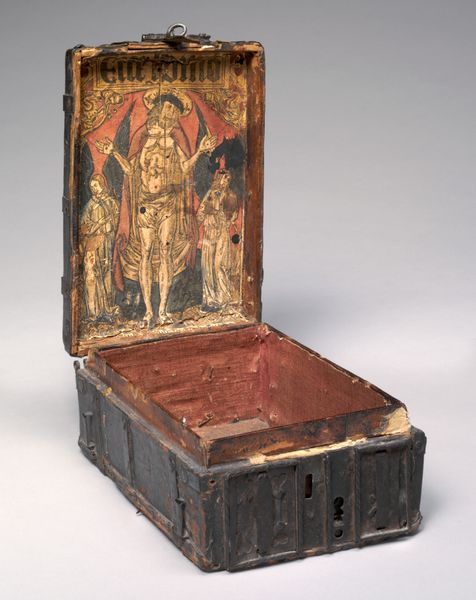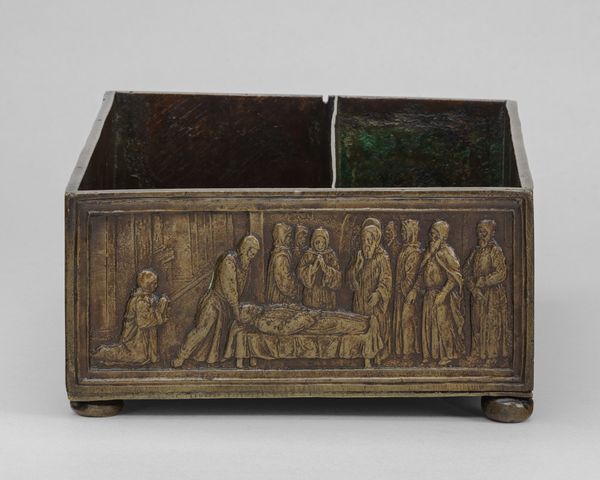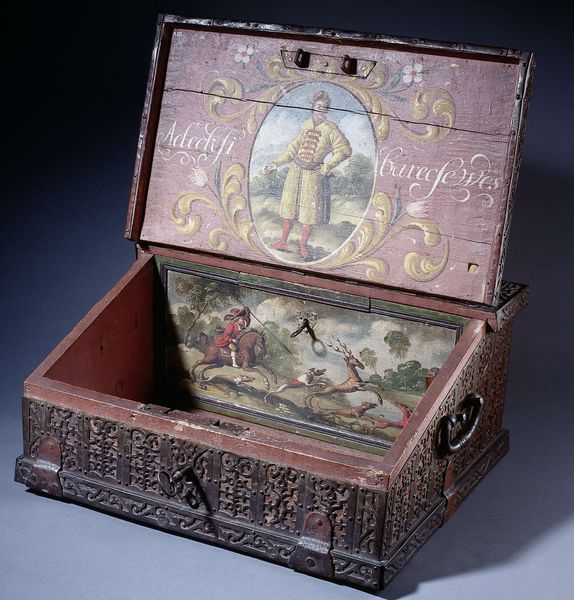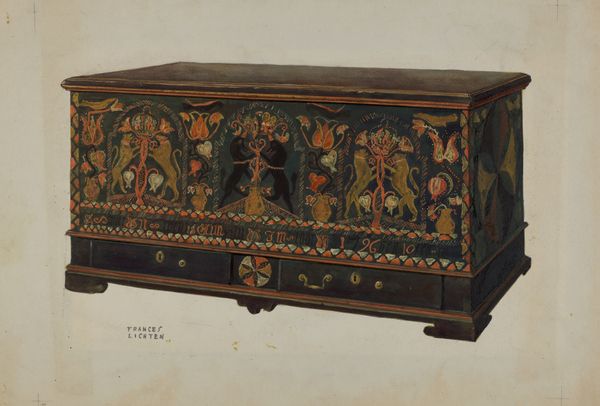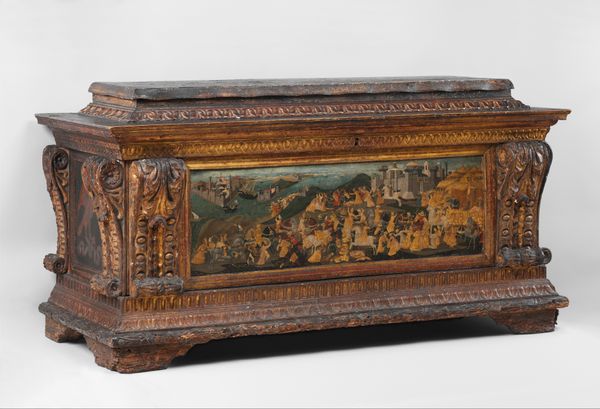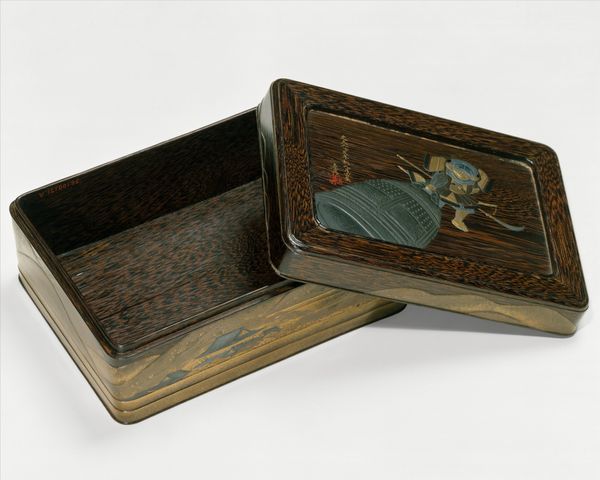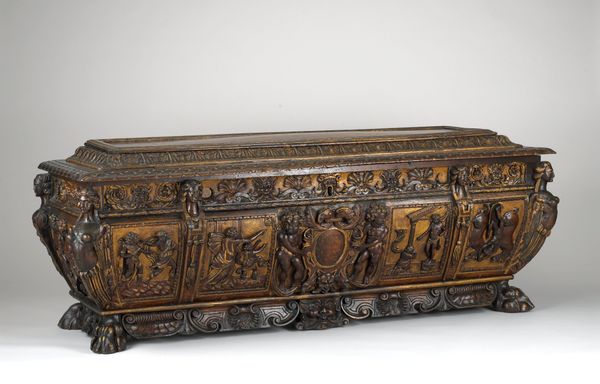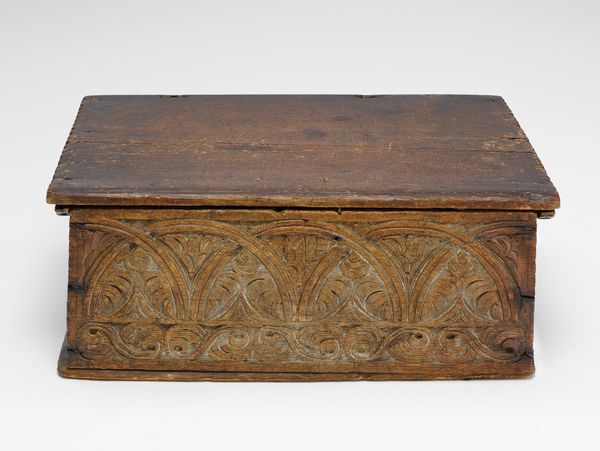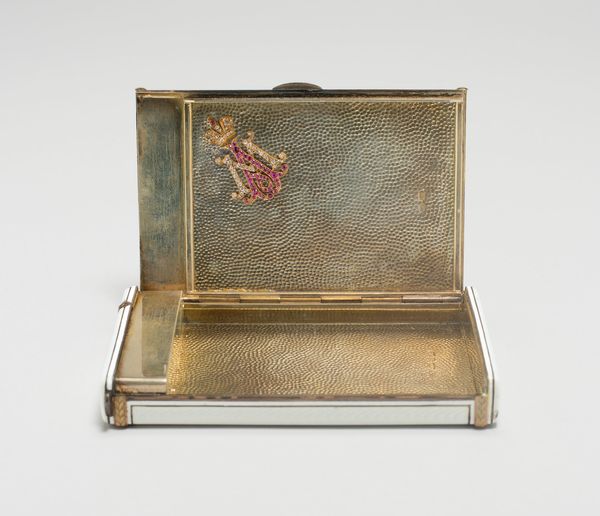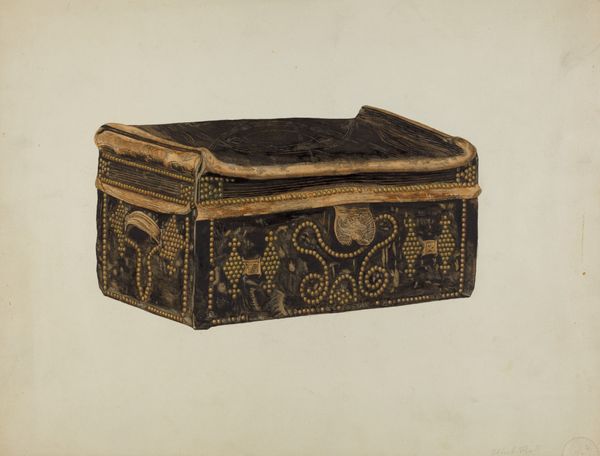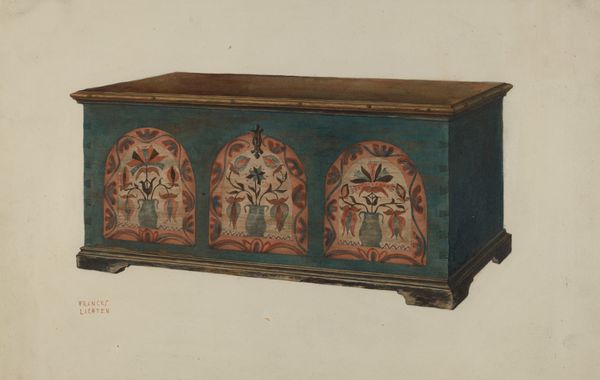
print, metal, wood
# print
#
metal
#
sculpture
#
wood
#
history-painting
#
northern-renaissance
Dimensions: 4 3/4 × 10 7/8 × 7 in. (12 × 27.62 × 17.78 cm) (closed)
Copyright: Public Domain
Editor: So, we're looking at this coffer, likely made sometime between 1490 and 1500. It's a wooden box, reinforced with metal, and features a print of the Annunciation inside the lid. What strikes me is its duality – it’s both a practical object and a devotional one. What catches your eye? Curator: Absolutely! It’s that blend that sings to me. Imagine the hands that crafted this, the woodworker shaping the box, the metalworker adding strength, and then, almost as an afterthought – but certainly not without deep intention – this beautiful, tender Annunciation scene graces the interior. A hidden world within a mundane object! Almost like a secret prayer, always accessible. Do you think the placement changes how we understand the Annunciation? Editor: That’s interesting…perhaps it personalizes the event, making it more intimate, since it's hidden away until opened. Were coffers like these common, like personal altars for travel, or storing treasured items? Curator: Precisely! These coffers served both purposes wonderfully, blending the sacred with the secular. Now, think about the viewer. This print wasn't simply *viewed*. It was *unveiled*. That little ritual imbues the Annunciation with such potent drama. The act of opening becomes an echo of Gabriel's revelation to Mary, don't you think? It reframes it, moves it from distant Biblical past to *this very moment* within that box. Editor: That makes me look at it completely differently! Seeing it as a personal unveiling. It’s not just storage; it’s an experience. I really hadn't thought of that ritual aspect. Curator: Right? It just elevates this object beyond its mere function. And what have we learned, beyond just admiring this piece? It reminds me to look a little closer, ask more questions. Editor: Definitely. It makes you wonder about all the untold stories that these objects held, safely locked away and, sometimes, revealed. Thanks for the perspective.
Comments
minneapolisinstituteofart almost 2 years ago
⋮
In its day, this leather-covered coffer had straps and was carried as a shoulder bag or traveling case. Once open, it sheds light on an important use of early prints: a fifteenth-century hand-colored woodcut of the Annunciation is pasted inside the cover of the large compartment, transforming this wooden box into a portable altar. There is a second shallow “secret” compartment in the lid, which might have been used to store traveling papers, valuables, or even relics or a consecrated host. Just over a hundred such boxes survive, all dating between 1480 and 1510, all French, and all likely produced in Paris. The Master of the Very Small Hours of Anne of Brittany ran a flourishing workshop in Paris, producing tapestry designs, stained glass, illuminations, and woodcuts.
Join the conversation
Join millions of artists and users on Artera today and experience the ultimate creative platform.
